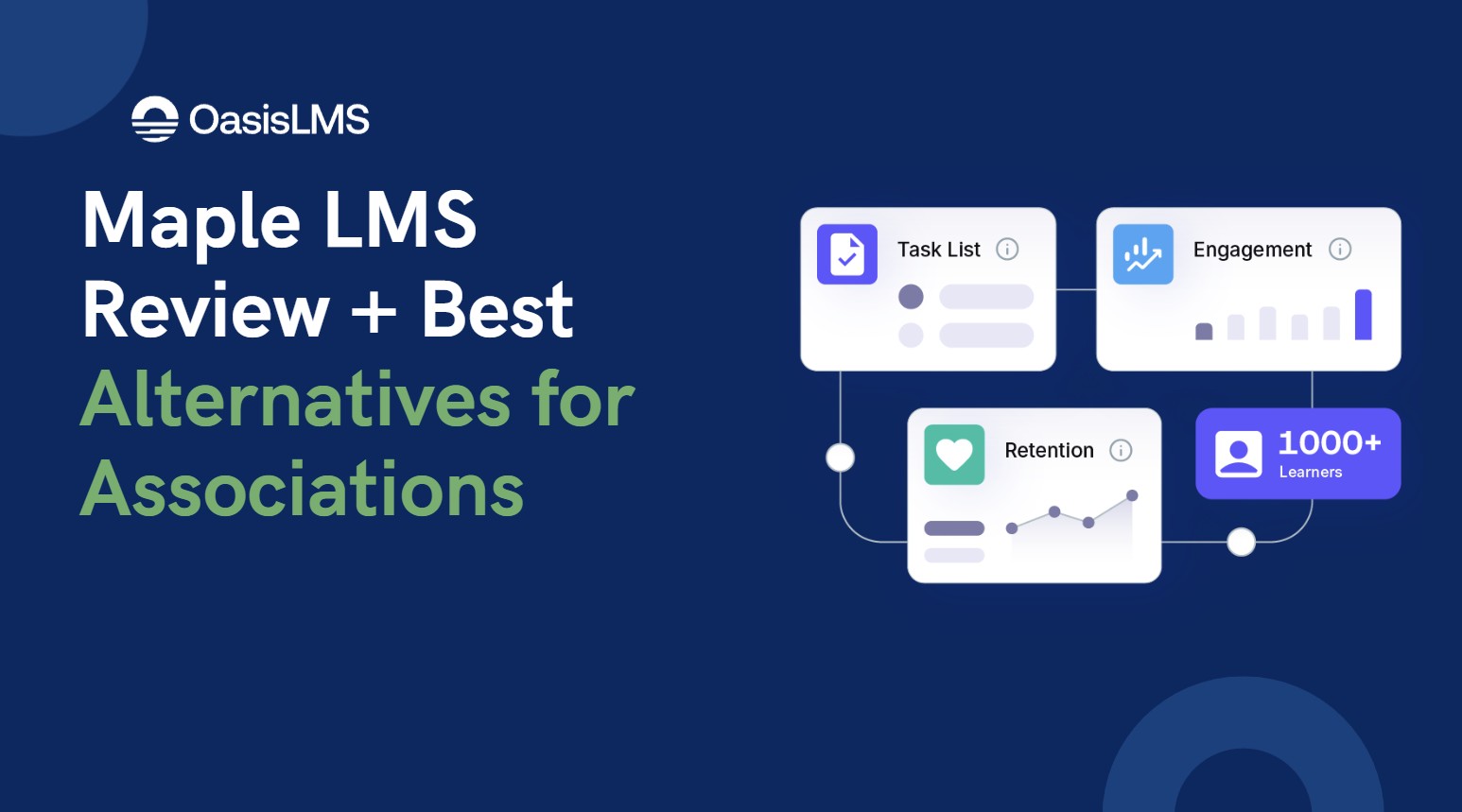
If you run learning and certification programs for a member-based organization, you’ve probably heard of Maple LMS. It’s positioned as a Salesforce-friendly platform with modern UX and a built-in authoring tool that helps non-technical teams publish fast. In this review, we’ll cover where Maple shines for associations, societies, and certifying bodies, plus a light look at portability questions and team coverage. Then we’ll stack it up against credible alternatives so you can choose the best fit for your strategy.
If your AMS/CRM is Salesforce or your data strategy revolves around it, Maple’s alignment can simplify enrollments, completions, CE reporting, and revenue tracking across systems.
Exam prep, CE/CEU/CME tracking, and recertification workflows benefit from clean data flows and structured assessments.
Teams that frequently update content for multiple audiences may appreciate the built-in authoring and straightforward admin tools.
Maple’s native builder, make it easy to create and update courses without juggling multiple tools. For busy education teams, this can reduce friction, shorten review cycles, and keep content fresh.
If you’re already operating out of Salesforce, Maple’s approach can streamline syncing member profiles, transcript data, and commerce events which means fewer CSVs and fewer reconciliation headaches.
“Good defaults” help admins publish, enroll, and report with less clicking around. Learners get a clean interface, mobile-friendly pages, and intuitive navigation.
For organizations with proctored exams, renewals, and maintenance of certification, Maple’s testing and transcript structure will feel familiar, and easier to wire into existing processes.
Many LMS platforms with built-in authoring emphasize hosting standards (SCORM/xAPI) but are less explicit about exporting packages from their native authoring tool. If you syndicate content to partners/chapters, license courses, or want a clean exit path later, ask directly:
(This isn’t unique to Maple; it’s a smart question for any “author-inside-the-LMS” solution.)
Global teams can be great for coverage and velocity. Just confirm support hours, SLAs, and escalation paths, including U.S. business-hours overlap for time-sensitive issues (exam windows, launches, renewal rush).
If you run high-stakes exams or large events, ask for performance benchmarks, load-testing artifacts, and CDN/caching details. Validate how proctoring, video, and analytics impact peak loads.
Request a current VPAT, details on WCAG conformance, and how accessible assessments, transcripts, and keyboard navigation are handled.
Pricing models vary by active learners, portals, add-ons, and support tiers. To avoid surprises, include these in your RFP:
Even with a well-aligned LMS, rollout is where success is made. Map these phases:
1) Integration & data planning
Identify source-of-truth systems (AMS/CRM, accreditation databases), define SSO, and finalize transcript/credit mappings (including partial credits).
2) Content strategy & migration
Decide which courses to rebuild in Maple’s authoring vs. import as SCORM/xAPI. If you expect to reuse content across platforms, keep an eye on package portability.
3) Testing & dry runs
Run a full learner journey—catalog → purchase/enroll →course → assessment → credit claim → certificate, under realistic loads. Include accessibility and mobile testing.
4) Staff enablement & governance
Document who authors, who reviews, and who publishes. Set versioning, release notes, and a cadence for QA. Define escalation for live exam incidents.
If you’re evaluating Maple, it’s smart to compare it with platforms built for associations, certifying bodies, and high-stakes education. Here are credible alternatives with different strengths.
Best for: Associations, societies, healthcare organizations that need CE/CME at scale and organizations looking to use AI. OasisLMS includes modern eCommerce, complex credit rules, and clean reporting.
Want a side-by-side tailored to your programs? We can map your requirements to an apples-to-apples comparison and share a sample RFP section.
Best for: Associations that want an LMS inside a familiar association-tech ecosystem.
Best for: Programs heavy on webinars, virtual conferences, and turning live content into revenue-generating on-demand libraries.
Best for: High-stakes exam prep with item banking, practice tests, and adaptive study paths.
Best for: Member organizations that want to wrap community, networking, and engagement around learning.
It can for many teams. If you’re comfortable building inside the LMS, Maple’s native authoring reduces moving parts. If you need maximal portability, keep your external authoring stack for flagship courses.
Absolutely. Many organizations author 70–80% of content natively for speed and maintain a portfolio of externally authored, standards-packaged courses for distribution or long-term independence.
Ask to see dashboards for credit claims, completions, and revenue. Confirm whether raw data exports and BI connectors are available for your reporting stack.
Maple LMS is a compelling option for associations and certification bodies, especially if you’re invested in Salesforce and want your team to publish fast. Keep the evaluation balanced with two simple guardrails:
Get these answers in writing, and you’ll know whether Maple LMS is the right fit or whether a package-first model (e.g., Oasis LMS) or another association-focused platform better supports your long-term strategy.
Whether managing CME for physicians or supporting member growth, Oasis LMS helps deliver high-impact education efficiently and at scale.
